
Cartoon critics Phil Witte and Rex Hesner look behind the gags to debate what makes a cartoon tick. This week our intrepid critics take a look at baseball.
It’s Spring and the immutable laws of the sports calendar call for baseball. Stadiums beckon as the boys of summer limber up for another season of America’s oldest organized sport …umm, behind lacrosse, that is.
Our first cartoon, by Tom Toro, celebrates the stirring of baseball teams across the nation. As the snow melts in his bucolic scene, a baseball team isn’t the only creature awakening.
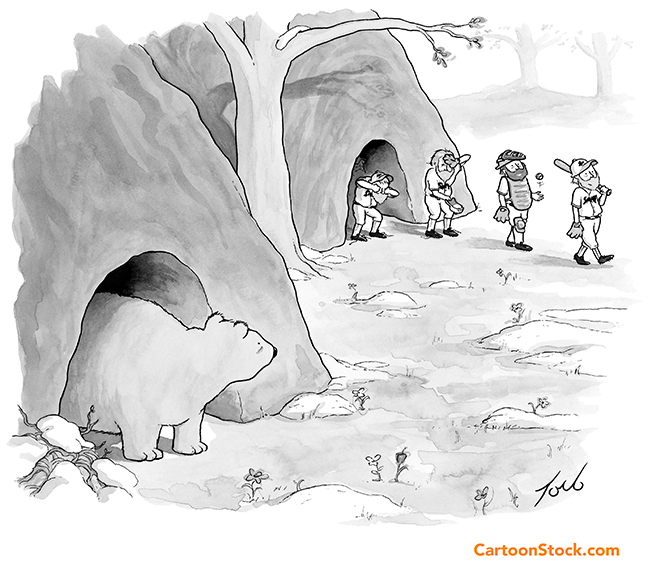
Baseball has traditionally been a rite of passage for boys. Nowadays, girls are equally enthusiastic about reenacting the rituals of the sport, including its rougher edges. William Haefeli’s stunning drawing shows a tableau of proud parents in the foreground while mayhem ensues in the background. The detail of the melee—with two hapless coaches attempting to intervene—is a master class in both composition and comedy.
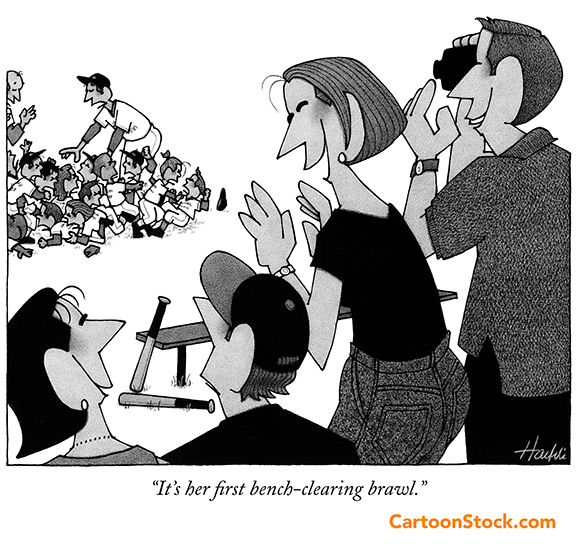
Baseball is famous for the lengths to which players will go to get up a game. From the proverbial sandlot to the alleys of New York City, zealots find a way to play this hallowed sport. English cartoonist Edward Steed celebrates this urge with his knack for the unconventional. If only this inmate had put forth similar effort towards more legal pursuits.

Ah, the traditional conference on the mound. The team in the field gathers round the beleaguered pitcher to whisper guardedly about tactical maneuvers … or so the television announcers would have us believe. The batter, of course, is abandoned at home plate, and perhaps, in Jason Patterson’s mind, feeling a bit left out.
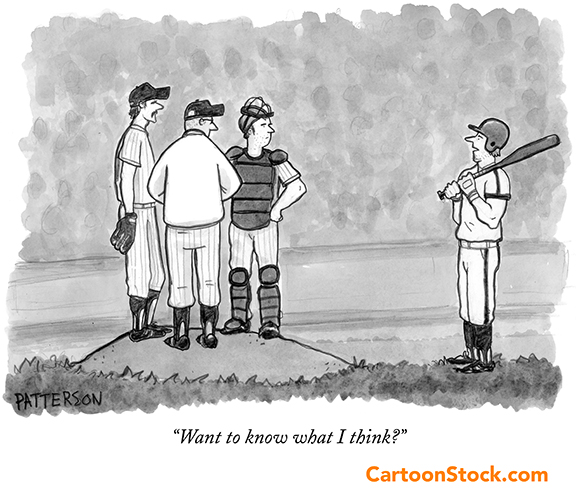
Comedians and cartoonists alike have thought up “here’s what the catcher really said” jokes. Our personal favorite comes from longtime New Yorker cartoonist Leo Cullum. Take a moment to savor the punchline—it’s one of the best.
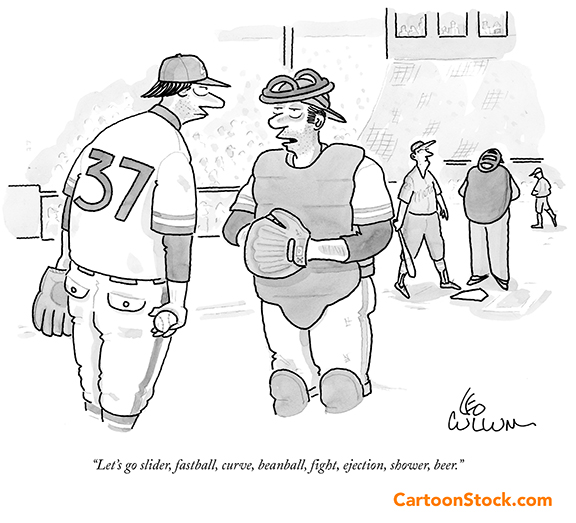
As mentioned earlier, baseball’s history in the United States stretches back eons. Sepia-tinged photos exist from the 1800s, and tattered cards of bygone heroes fetch millions. Syd Hoff’s complex scene, set in the grandstands, was published in 1951. It’s hard to imagine men wearing ties to a ballgame in the current era.
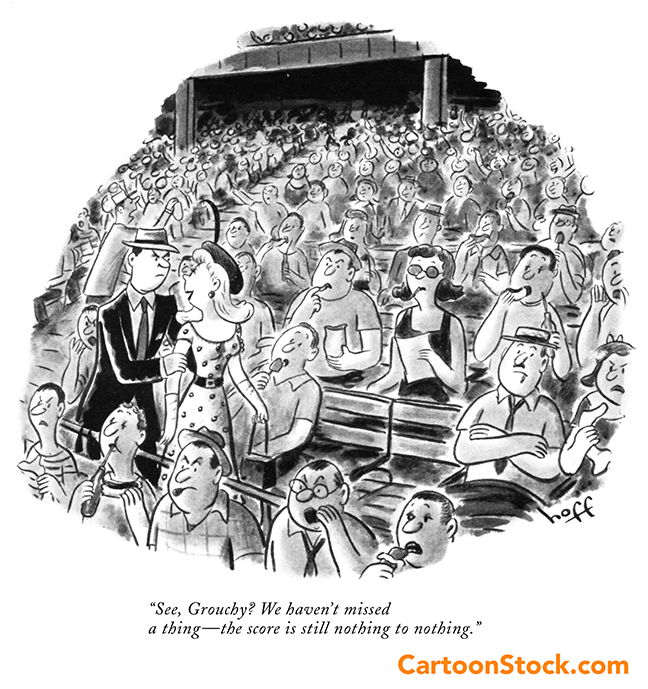
In contrast to the previous cartoon’s era, today’s ballplayers must have sophisticated marketing skills in addition to a high batting average. It’s not enough to wave at the fans and toss a couple of balls to kids in the stands anymore. As Alex Gregory suggests, modern sluggers are savvy creators of social media content as well.
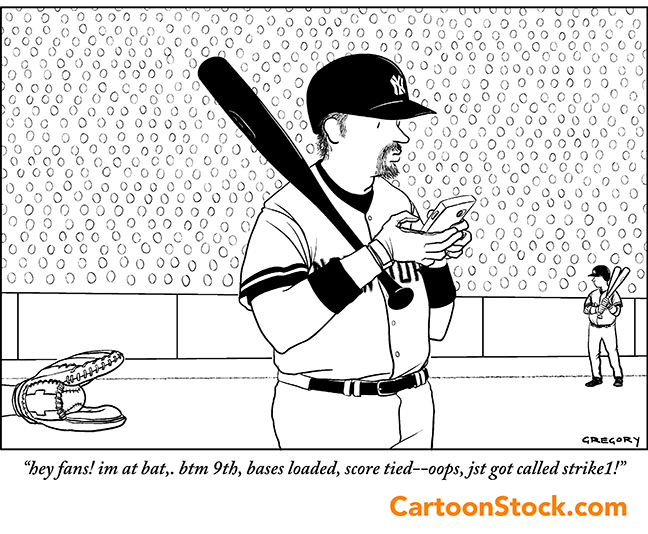
As attention spans plummet, the duration of the average baseball game has ballooned to over three hours. Fans are clamoring for improvements to a hidebound game resistant to change. Football, basketball, and hockey have all innovated, resulting in sold-out venues. Drew Dernavich thinks he’s got an idea to engage bored baseball fans.
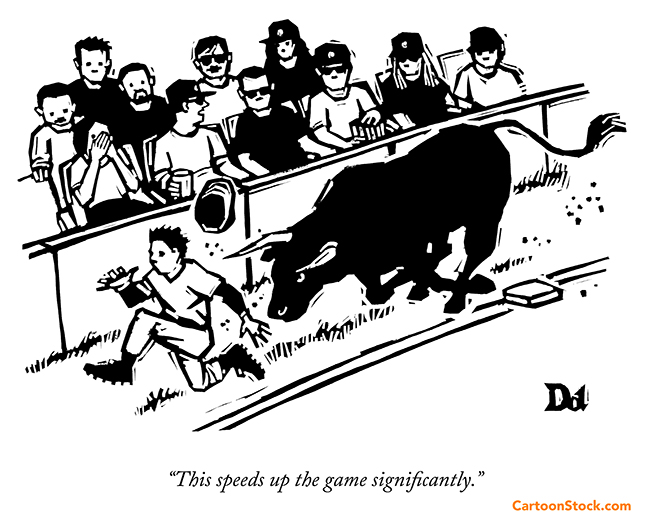
And what about a wholesale reinvention of the sport? John O’Brien, king of the caption-less cartoon, has a breathtaking new concept. Only he could conjure up the fusion of two venerable American games: baseball and Skee-Ball.
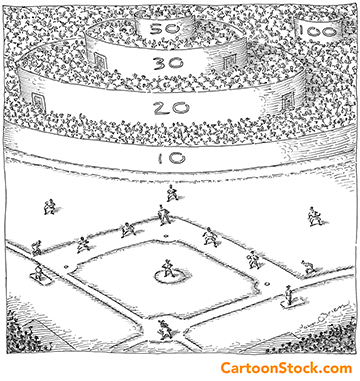
Baseball serves as a fount of metaphors for our culture. Baseball-themed movies, like The Natural or Field of Dreams, extoll the sport as a muse for our national identity. Leo Cullum plumbs the intellectual depths in an allegorical attempt to answer nature’s most vexing question.
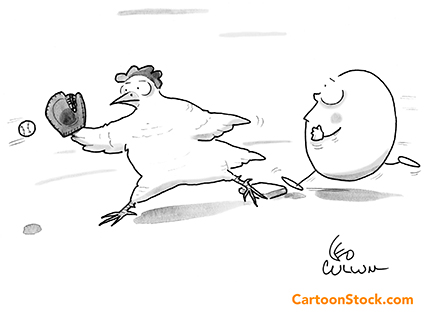
Ultimately, baseball appears to be on the wane in terms of fan popularity. It doesn’t compete well against the dynamism of hockey. Nor does it stack up to the smash and bang of football. What to do? Let’s listen in to Mischa Richter’s outtake from a candid conversation between our most enduring national symbols.

